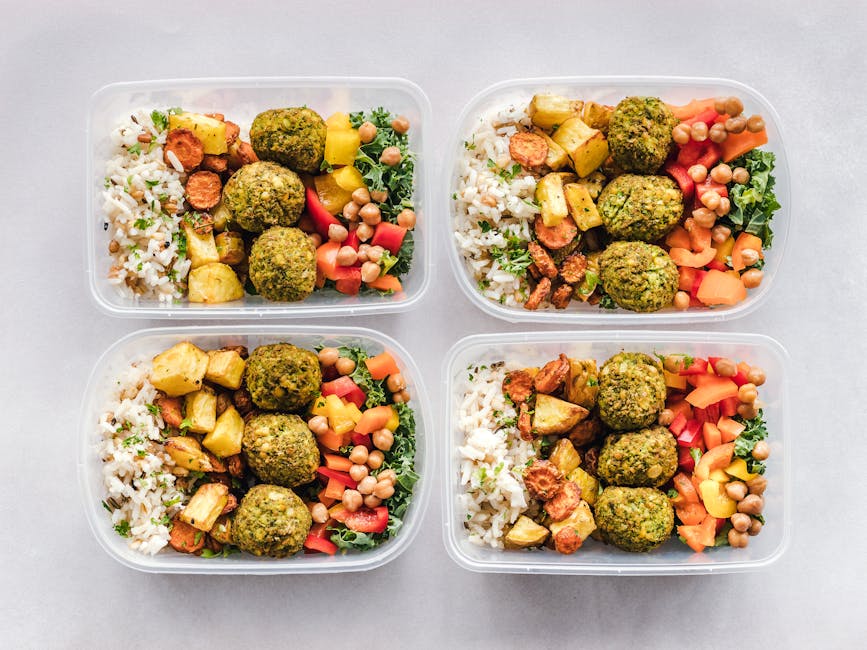The Science of Phytonutrients and Color
The vibrant colors of fruits and vegetables are not merely for visual appeal; they are direct indicators of the specific phytonutrients, or plant chemicals, contained within. These phytonutrients are bioactive compounds that plants produce to protect themselves from environmental threats like UV radiation and pests. When we consume them, they confer powerful protective and health-promoting benefits to our bodies. Each color family represents a different class of these potent compounds, making a diverse, colorful diet synonymous with a diverse nutrient intake.
Red: The Heart-Healthy and Cancer-Fighting Powerhouses
Red fruits and vegetables get their brilliant hue primarily from lycopene and anthocyanins. Lycopene, a powerful carotenoid antioxidant, is famously concentrated in tomatoes, watermelon, and pink grapefruit. Extensive research links lycopene to reduced risk of certain cancers, particularly prostate cancer, and it plays a significant role in promoting heart health by helping to manage LDL cholesterol levels and blood pressure. Anthocyanins, found in strawberries, raspberries, and red apples, are potent antioxidants that combat oxidative stress and inflammation, supporting cognitive function and cardiovascular health. Red bell peppers are also an excellent source of vitamin C, crucial for immune function and collagen production.
Orange and Yellow: Boosting Immunity and Vision
The sunny shades of orange and yellow are courtesy of beta-carotene, beta-cryptoxanthin, and flavonoids. Beta-carotene, which the body converts into vitamin A, is essential for maintaining healthy vision, supporting a robust immune system, and promoting skin health. Excellent sources include carrots, sweet potatoes, pumpkins, and butternut squash. Citrus fruits like oranges, lemons, and grapefruits are packed with vitamin C and flavonoids such as hesperidin, which enhance blood vessel function and possess strong anti-inflammatory properties. Pineapple contains bromelain, an enzyme that aids digestion and reduces inflammation, while yellow bell peppers offer one of the highest vitamin C contents of any vegetable.
Green: The Cellular Protectors and Detoxifiers
The color green in plants is from chlorophyll, a pigment vital for photosynthesis. Green vegetables are also incredibly rich in folate, vitamin K, potassium, and compounds like glucosinolates and isothiocyanates. These compounds, abundant in cruciferous vegetables like broccoli, kale, Brussels sprouts, and cabbage, are renowned for their role in the body’s natural detoxification processes and have been studied for their potent anti-cancer effects. Leafy greens such as spinach and Swiss chard are powerhouses of folate, essential for DNA synthesis and cell division, and vitamin K, critical for blood clotting and bone health. Avocados provide heart-healthy monounsaturated fats and potassium, while green beans and peas offer fiber and a range of micronutrients.
Blue and Purple: The Brain-Boosting Antioxidants
The deep blues and purples in foods are attributed to anthocyanins, a type of flavonoid with exceptional antioxidant capacity. These compounds are vital for neutralizing free radicals and reducing oxidative stress, which is linked to chronic diseases and aging. Studies consistently show that diets rich in anthocyanins support cognitive health, improve memory, and may delay brain aging. They also contribute to heart health by improving cholesterol levels and enhancing vascular function. Iconic examples include blueberries, often hailed as a superfood for their high antioxidant content, blackberries, elderberries, plums, and eggplant. Purple cabbage and purple carrots are also excellent choices for incorporating these powerful compounds into your meals.
White and Brown: The Understated Immune and Heart Allies
While not technically part of a rainbow, white and brown fruits and vegetables are indispensable for a truly balanced diet. They contain a distinct set of beneficial phytonutrients, including allicin and quercetin. Allicin, found in garlic and onions, has powerful antimicrobial and anti-inflammatory properties and is strongly associated with supporting cardiovascular health and immune function. Mushrooms are unique as they contain ergothioneine, an antioxidant that protects cells, and are a natural non-animal source of vitamin D when exposed to UV light. Cauliflower and parsnips provide fiber and vitamin C, while potassium-rich potatoes are a foundational energy source.
Practical Strategies for Incorporating a Rainbow Diet
Adopting a “eat the rainbow” approach requires mindful planning but is easily achievable. Focus on adding color to every meal. Start the day with a smoothie containing spinach (green), banana (white), blueberries (blue), and mango (orange). Build lunches and dinners around a base of leafy greens and add a variety of chopped vegetables like red peppers, purple onions, yellow corn, and steamed broccoli. Keep a fruit bowl visible on the counter for easy snacking on apples, oranges, and bananas. When grocery shopping, make it a goal to select at least one produce item from each color group. Experiment with new vegetables each week to keep meals exciting and broaden your phytonutrient profile. Remember that fresh, frozen, canned, and dried all count; the key is variety and consistency.
Addressing Common Challenges and Considerations
A frequent obstacle is the perceived higher cost of fresh produce. To mitigate this, consider buying frozen fruits and vegetables, which are often more affordable, equally nutritious, and pre-chopped, saving time. Shopping in-season for fresh items also lowers costs. For those concerned about preparation time, pre-washed salad mixes, pre-cut vegetable trays, and simple cooking methods like roasting a large batch of mixed vegetables can streamline the process. It is also important to note that while striving for color variety is ideal, it is not about perfection. The goal is to consistently include a wide array of colors over time. For individuals with specific dietary restrictions or allergies, focusing on the colors they can safely consume is still highly beneficial. Always wash all fruits and vegetables thoroughly to remove pesticide residues and dirt.
